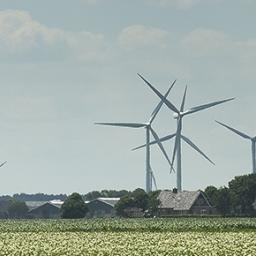The bridge to net zero matters more than the destination
Countries have started setting their own national net-zero targets. While net-zero targets establish long-term ambitions, countries’ mid-term targets, as outlined in their Nationally Determined Contributions (NDCs) towards 2030, and short-term policies serve as a bridge connecting the current state of the world to a net-zero future. Assessing the interplay between short- and long-term emissions is particularly challenging due to differing expectations regarding carbon dioxide removal (CDR)—approaches to remove emissions from the atmosphere. However, to effectively limit climate change, countries must reduce their actual emissions (independently of CDR) as rapidly as possible. Therefore, it remains essential to understand the scale and uncertainty of actual emissions that persist once countries achieve their net-zero targets and to explore ways to compare these with short-term actions.
In this study, we expand estimates of the emissions that 20 countries plan to compensate with removals in the year of their net-zero targets to understand how much countries plan to actually reduce emissions. We also develop emission projections up to 2030 under current policies and NDC scenarios to compare those with the remaining emissions estimated for net-zero targets.
Key findings:
Current policies and NDC targets remain misaligned with net-zero targets.
- Remaining emissions associated with net-zero targets account for, on average, 21% of 2019 emissions (range: 6%–59%).
- Residual emissions amount to 3.4–12.6 GtCO₂e, or ~9%–33% of global emissions in 2019.
Current policies and NDC targets remain misaligned with net-zero targets.
- Between 2019 and 2030, emissions under current policies decrease at -0.2% per year.
- Meeting 2030 NDCs would improve this to -0.7% per year, though significant variation exists.
- Net-zero targets imply a required annual reduction rate of -3.8% from 2030 onwards.
Despite substantial uncertainty, net-zero targets have helped translate global goals of peaking and declining emissions to the national level. Improving the credibility of net-zero targets and developing additional modelling exercises to support understanding the scale of the sectoral transformations needed remains important.
Authors
Specifications
- Publication title
- The bridge to net zero matters more than the destination
- Publication date
- 13 December 2024
- Publication type
- Report
- Page count
- 34
- Publication language
- English
- Product number
- 5816
